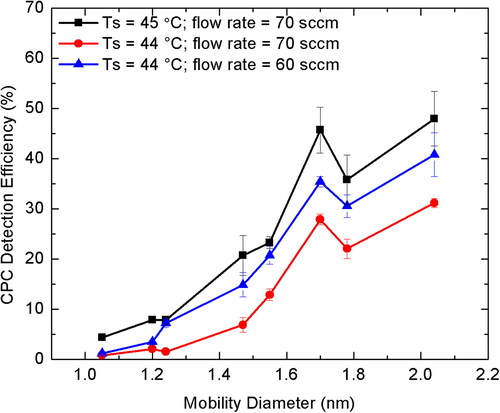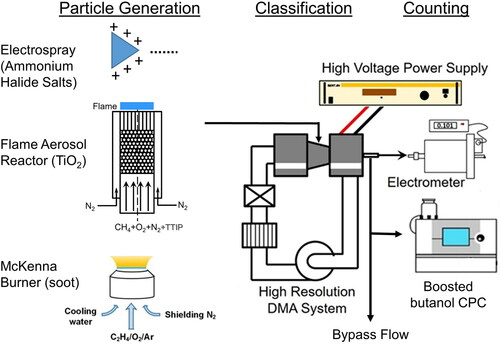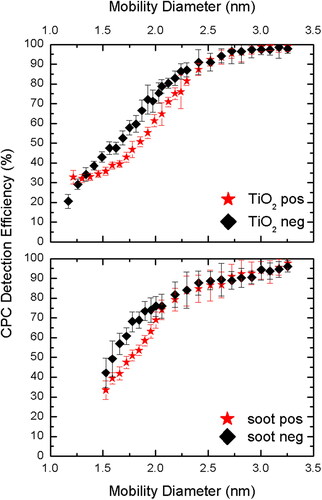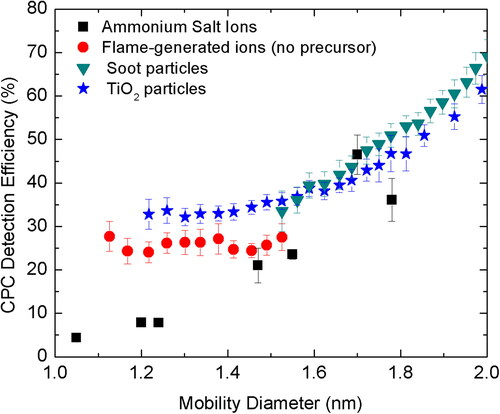Figures & data
Table 1. Test plan for the experiments for different particles at different CPC operating conditions.
Figure 2. Number concentration of particles formed by homogeneous nucleation of butanol vapors for different aerosol capillary flow rates as a function of the saturator temperature.
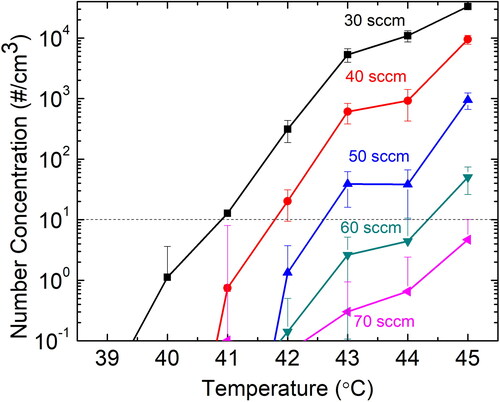
Figure 3. Effect of increasing saturator temperature on the measurement of THAB salt ions for butanol CPC in boosted conditions in comparison with an electrometer. Capillary flow rate is kept fixed at 50 sccm.
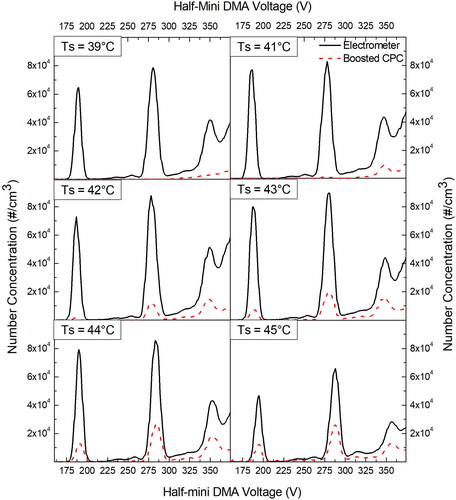
Figure 4. Effect of capillary flow rate on the CPC Detection Efficiency (%) at different saturator temperature for the measurement of THA + ions.
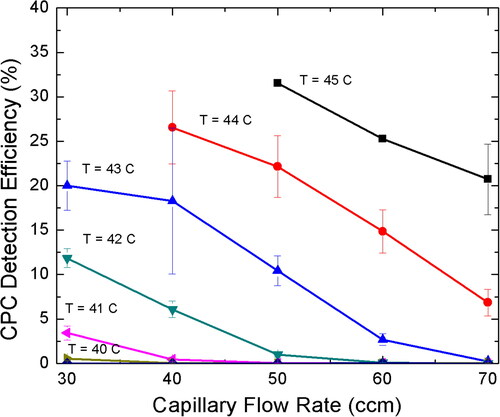
Figure 5. CPC Detection Efficiency (%) for different ammonium alkyl halide salt ions as a function of mobility diameters under three different CPC conditions.
